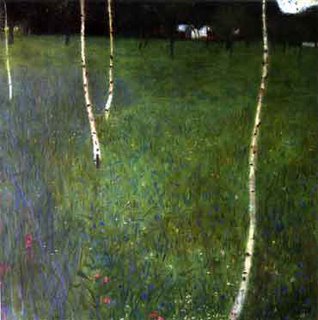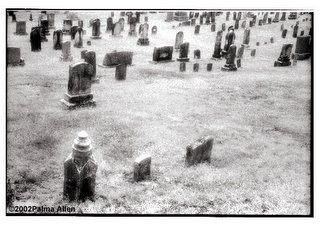Production Ideas
Translate the meaning of The Cherry Orchard into dynamic production ideas. What is the organizing image or metaphor you would articulate to your design team? (You must include at least SIX visual images with annotation to support your design ideas.)

The remarkable thing about The Cherry Orchard is that despite the daunting multi-syllabaic names and the occasional unexplained noise in the distant woods, Lyubov’s plight might easily be lifted and transplanted to any culture. In Russia, Greece, and even here in rural Georgia there is an acute awareness and regard for status and for family that is mirrored in Chekhov’s play. Likewise, the themes of lost children and the slow dying of the ideals and way of life held dear by our parents are sadly front and center in just about any culture that has been exposed to the 20th Century. Nothing can be more dynamic than a clear and uncluttered examination of these themes through Chekhov’s text.
Visually, the immediate world of the play (Nursery, Meadow, Drawing Room, and finally an empty Nursery) should confront Lyubov. If Lyubov’s escapades abroad are a long drunken binge, then the trip home and the point at which we pick up with her is the morning after, the reality of a hangover and the deeper sense that she has lost control of her life. We can argue that all these characters, to a degree, are stuck in the past, regret crippling them in the present. Like all of us, they try to pretend that they are free, but we know better. Visually, the play requires a series of triggers, vivid sights or sounds that threaten to expose the characters to their own lives: A GRAVESTONE, A ROCKING HORSE, A PHOTOGRAPH, AN UNIDENTIFABLE NOISE. Actor and set creates the two poles of tension which unfold within each event. Right away this lays the groundwork for a dynamic, taut, and visually assertive way for the action of the play to unfold. Chekhov exploits this trigger tactic most clearly by introducing Trofimov, a beloved family friend --- who also happens to have been the dead child’s tutor. Lyubov has no choice but to acknowledge him and navigate the surfacing feelings that threaten her peace of mind. Structurally each act and possibly each event should contain a trigger --- a prop, set piece, or sound/lighting effect, that stands out from its surroundings. PLACE forces the action in the following ways: A meadow and cemetery overlooking the cherry orchard most directly addresses what has been lost and what is at stake to be lost. The odd sound in the distance hauntingly punctuates the growing sense of quiet desperation. In Act 4 the emptiness of a bare nursery becomes the most telling aspect of the world of the play, literally suggesting the void that the estate has become and foreshadowing the fate of all but Lopakhin. To unify the ideas of The Cherry Orchard, the production requires that each locale remain homogenous, even commonplace. Within this monochromatic world, a single set piece or sound/lighting effect must stand out vividly, forcing Lyubov and others, by its mere presence, to acknowledge the pain they’ve tried so hard to suppress.


The remarkable thing about The Cherry Orchard is that despite the daunting multi-syllabaic names and the occasional unexplained noise in the distant woods, Lyubov’s plight might easily be lifted and transplanted to any culture. In Russia, Greece, and even here in rural Georgia there is an acute awareness and regard for status and for family that is mirrored in Chekhov’s play. Likewise, the themes of lost children and the slow dying of the ideals and way of life held dear by our parents are sadly front and center in just about any culture that has been exposed to the 20th Century. Nothing can be more dynamic than a clear and uncluttered examination of these themes through Chekhov’s text.
Visually, the immediate world of the play (Nursery, Meadow, Drawing Room, and finally an empty Nursery) should confront Lyubov. If Lyubov’s escapades abroad are a long drunken binge, then the trip home and the point at which we pick up with her is the morning after, the reality of a hangover and the deeper sense that she has lost control of her life. We can argue that all these characters, to a degree, are stuck in the past, regret crippling them in the present. Like all of us, they try to pretend that they are free, but we know better. Visually, the play requires a series of triggers, vivid sights or sounds that threaten to expose the characters to their own lives: A GRAVESTONE, A ROCKING HORSE, A PHOTOGRAPH, AN UNIDENTIFABLE NOISE. Actor and set creates the two poles of tension which unfold within each event. Right away this lays the groundwork for a dynamic, taut, and visually assertive way for the action of the play to unfold. Chekhov exploits this trigger tactic most clearly by introducing Trofimov, a beloved family friend --- who also happens to have been the dead child’s tutor. Lyubov has no choice but to acknowledge him and navigate the surfacing feelings that threaten her peace of mind. Structurally each act and possibly each event should contain a trigger --- a prop, set piece, or sound/lighting effect, that stands out from its surroundings. PLACE forces the action in the following ways: A meadow and cemetery overlooking the cherry orchard most directly addresses what has been lost and what is at stake to be lost. The odd sound in the distance hauntingly punctuates the growing sense of quiet desperation. In Act 4 the emptiness of a bare nursery becomes the most telling aspect of the world of the play, literally suggesting the void that the estate has become and foreshadowing the fate of all but Lopakhin. To unify the ideas of The Cherry Orchard, the production requires that each locale remain homogenous, even commonplace. Within this monochromatic world, a single set piece or sound/lighting effect must stand out vividly, forcing Lyubov and others, by its mere presence, to acknowledge the pain they’ve tried so hard to suppress.



0 Comments:
Post a Comment
<< Home